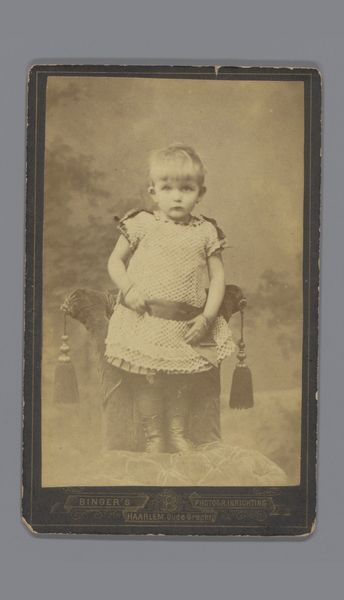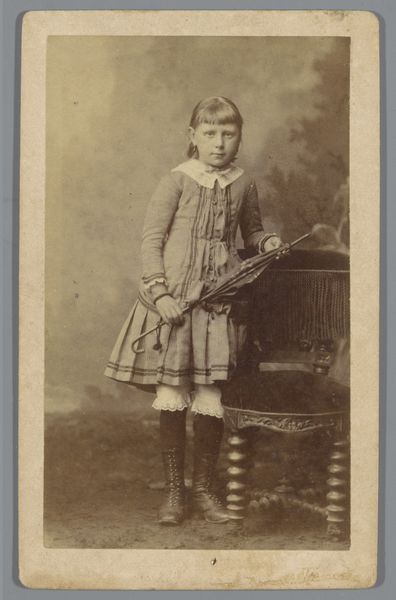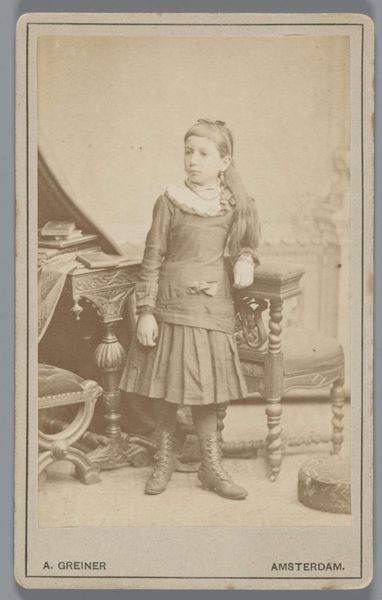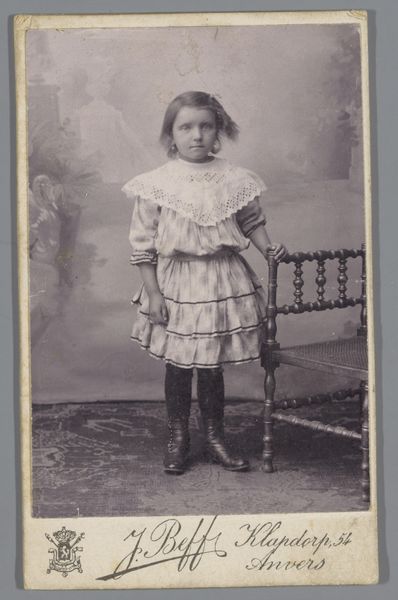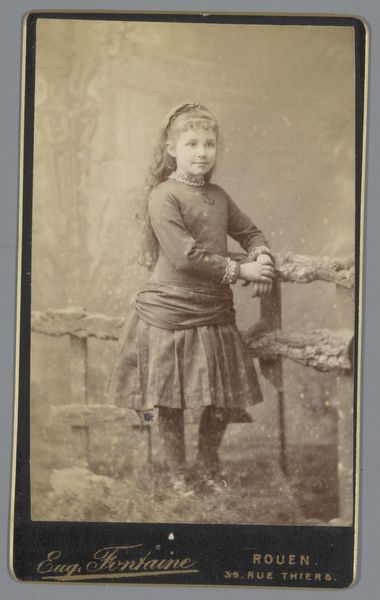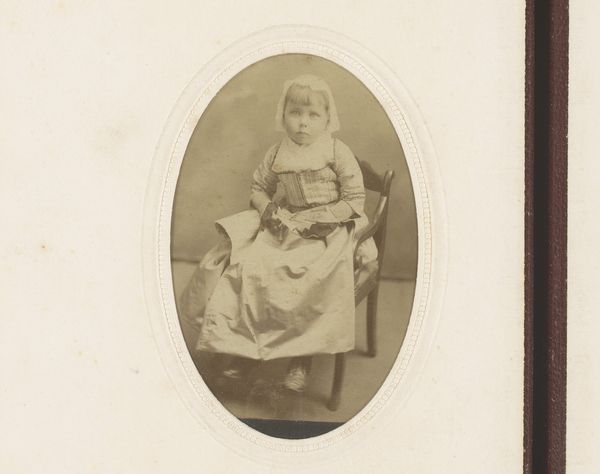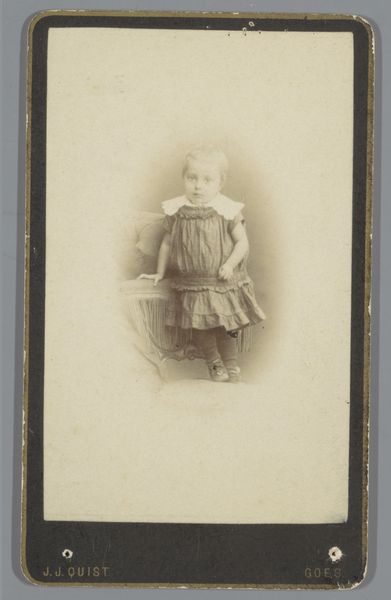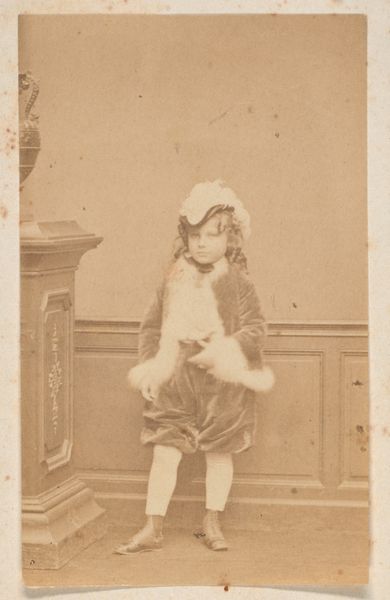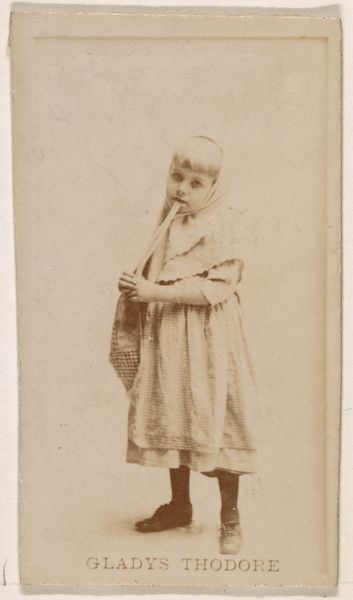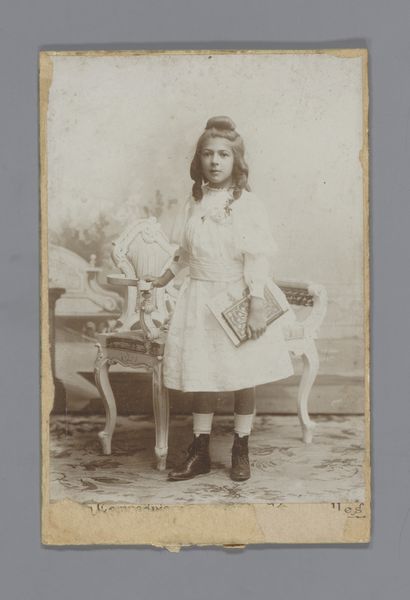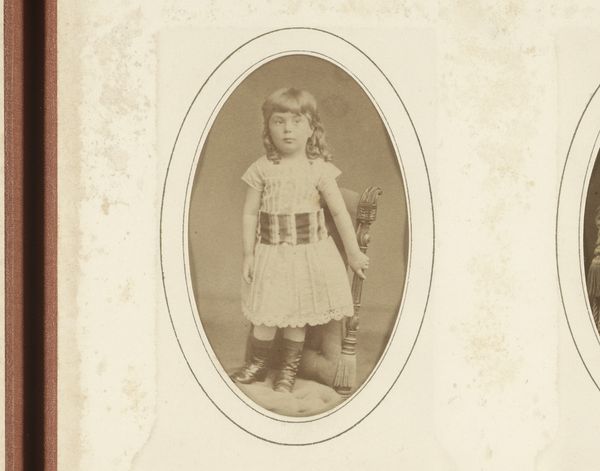
photography
#
portrait
#
still-life-photography
#
photography
Dimensions: height 103 mm, width 63 mm
Copyright: Rijks Museum: Open Domain
Editor: This is a photo entitled "Portret van een onbekend kind met rieten mand" or "Portrait of an unknown child with a wicker basket", taken sometime between 1881 and 1903. It's striking how the sepia tones give the piece a somewhat somber yet timeless feel. The child's pose also makes me wonder what was happening in the life of the sitter and in portrait photography at this moment in history. What can you tell me about it? Curator: It’s a very compelling example of late 19th-century studio photography. The backdrop is neutral, likely painted. The ornate chair is typical of what photographers used as props to denote status. But, as you suggest, let’s consider this photo as a cultural object. Note the child's plain, practical clothing, unlike the clothes wealthy adults would have used for a photograph to convey power and affluence. This, along with the somewhat mournful expression and simple basket, suggests an attempt by the photographer to evoke something more, perhaps empathy for vulnerable subjects. Editor: So you see the presentation and styling as clues to something larger? Curator: Precisely. How did portrait studios present children and why? The democratization of photography meant that more people could commission images of themselves and their families. These images played a part in constructing social and familial identities in an era undergoing profound social change. Do you notice how carefully staged the child is? Nothing is spontaneous or free. Editor: Now that you mention the careful staging, it seems a bit contrived to elicit feelings of pity or sentimentality. Curator: And those feelings served specific functions at this time! What functions? Editor: Hmm. So, while the child is "unknown," the image speaks volumes about photographic representation and societal attitudes toward children at the time. Thanks for the added layers of understanding. Curator: It shows how much we can interpret from images we tend to deem just a regular portrait photo. Analyzing a photo's political and social history, however, can really add another perspective on why these were created in the first place.
Comments
No comments
Be the first to comment and join the conversation on the ultimate creative platform.

